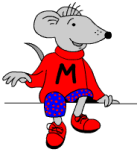 There are two parts to this free maths worksheet on classifying shapes, both involving Venn diagrams. The idea is to put either the names of shapes or drawings of shapes in the correct areas of the Venn diagram.
There are two parts to this free maths worksheet on classifying shapes, both involving Venn diagrams. The idea is to put either the names of shapes or drawings of shapes in the correct areas of the Venn diagram.
Some examples have been put in the Triangles diagram. Some careful thought needs to be put into this exercise. For example, is it possible to have a right angled triangle which is also isosceles (ie two sides the same length). If so, is it possible to have a right angled triangle which is also equilateral? I’ll leave to to work out the answers to these.
Notice the scalene triangle which is outside the other areas as it has no equal sides and no right angles.
The second diagram is to put polygons and quadrilaterals in: remember that whilst many of the quadrilaterals we see in real life are regular, they do not have to be so.
Free Y5 maths worksheet: Classify shapes using Venn diagrams
 A simple starter worksheet looking at recognising squares. A square is a regular type of rectangle as it has four right angles and all four sides are equal in length. For those of you who like to think about these things, it is a special case of a rhombus, kite, parallelogram and trapezoid. However, for the average five year old recognition alone is enough. Concentrate on pointing out that the sides have to be equal in length.
A simple starter worksheet looking at recognising squares. A square is a regular type of rectangle as it has four right angles and all four sides are equal in length. For those of you who like to think about these things, it is a special case of a rhombus, kite, parallelogram and trapezoid. However, for the average five year old recognition alone is enough. Concentrate on pointing out that the sides have to be equal in length. Those lovely people who write the SATs really like little mathematical puzzles. One such puzzle is to fill in missing numbers in a square or block. There will always be a logical way to find the answers, usually by completing what is possible will lead to the creation of the next possible step until the whole square can be completed.
Those lovely people who write the SATs really like little mathematical puzzles. One such puzzle is to fill in missing numbers in a square or block. There will always be a logical way to find the answers, usually by completing what is possible will lead to the creation of the next possible step until the whole square can be completed. A second, quick revision of counting on. Whilst some children may well still be starting with the given number and then counting on with their fingers others will be using more sophisticated methods such as:
A second, quick revision of counting on. Whilst some children may well still be starting with the given number and then counting on with their fingers others will be using more sophisticated methods such as: